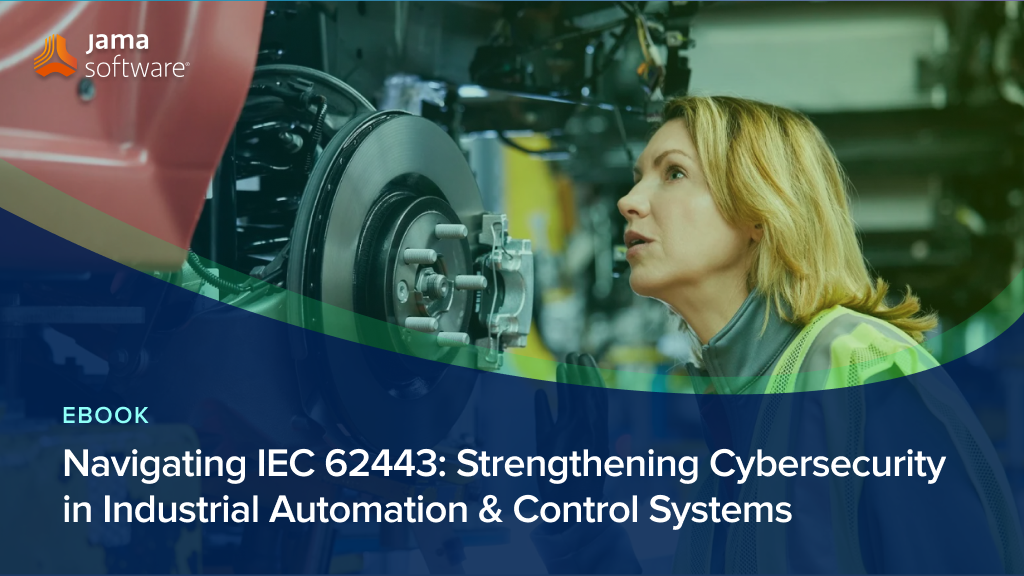
In this blog, we recap our recent eBook, “Navigating IEC 62443: Strengthening Cybersecurity in Industrial Automation & Control Systems.”
Navigating IEC 62443: Strengthening Cybersecurity in Industrial Automation & Control Systems
Understanding IEC 62443
IEC 62443 is a comprehensive set of standards aimed at securing Industrial Automation and Control Systems (IACS) against cybersecurity threats. It provides guidelines for designing, implementing, and maintaining secure industrial automation systems, ensuring the integrity, availability, and confidentiality of these critical infrastructures.
Structure
This IEC series is organized into several parts, each focusing on different aspects of IACS security:
- General: Introduces fundamental concepts, models, and terminology related to security.
- Policies and Procedures: Focuses on establishing and managing security
- Components and Requirements: Specifies technical security requirements for IACS components and secure product development practices.
- Profiles: Defines industry-specific cybersecurity requirements and provides a structured approach to implementing measures based on cybersecurity profiles.
- Evaluation: Describes assessment methodologies to ensure consistent and reproducible evaluation results concerning the requirements of individual parts.
RELATED: Mastering ISO/IEC 27001: A Guide to Information Security Management
Key Components
- IEC 62443-1-1: Covers terminology, concepts, and models, laying the foundation for understanding the standards.
- IEC 62443-2-1: Provides guidance on establishing security programs for asset owners, aligning with standards like ISO/IEC 27001.
- IEC 62443-3-3: Specifies system security requirements and security levels, detailing technical requirements for systems
- IEC 62443-4-1: Focuses on secure product development lifecycle requirements, outlining how to develop secure products.
- IEC 62443-4-2: Defines technical security requirements for IACS components, ensuring components meet specific security standards.
Recent Developments
This IEC series is continually evolving to address emerging cybersecurity challenges. Recent updates include:
- IEC 62443-1-5: Introduced in September 2023, this technical specification outlines the scheme for IEC 62443 security profiles, providing a structured approach to implementing cybersecurity measures based on defined profiles.
- IEC 62443-2-1: The second edition, released in August 2024, updates the security program requirements for IACS asset owners, aligning with evolving industry practices and emerging threats.
- IEC 62443-2-4: The second edition, published in December 2023, revises the requirements for IACS service providers, ensuring that integrators meet current cybersecurity capabilities across various domains.
- IEC 62443-6-1: Released in March 2024, this technical specification introduces a security evaluation methodology for IEC 62443-2-4, aiming to ensure consistent and reproducible assessment results.consistent and reproducible assessment results.
RELATED: Traceable Agile™ – Speed AND Quality Are Possible for Software Factories in Safety-critical Industries
Impact on Industrial Automation
This standard has a significant impact on industrial automation by establishing a structured framework for cybersecurity in industrial control systems (ICS) and operational technology (OT) environments. Here’s how it influences the industry:
- Enhances Cybersecurity in Industrial Automation: IEC 62443 provides comprehensive guidelines to protect industrial networks, control systems, and automation components from cyber threats. It helps in mitigating risks associated with unauthorized access, malware attacks, and insider threats.
- Establishes a Risk-Based Approach: The standard encourages risk assessment and mitigation strategies based on the specific threats and vulnerabilities of an automation system. This ensures tailored security measures rather than a one-size-fits-all approach.
- Defines Roles & Responsibilities: IEC 62443 categorizes the responsibilities of different stakeholders in industrial automation, including:
- Asset owners (e.g., manufacturing plants, energy companies)
- System integrators (those designing and configuring industrial systems)
- Product suppliers (hardware and software vendors) Each entity must implement security controls based on its role in the automation.
- Promotes Secure System Development & Lifecycle Management: The standard provides guidance on secure development, configuration, and maintenance of industrial automation components, ensuring security is embedded from design to decommissioning.
- Improves Compliance & Regulatory Alignment: Many governments and industries are aligning cybersecurity regulations with IEC 62443, making it essential for organizations to adopt the standard to stay compliant with industry best practices and legal requirements.
- Encourages Interoperability & Secure Communication: By enforcing secure communication protocols and access controls, IEC 62443 ensures that automation systems can safely interact with IT networks, cloud services, and IIoT (Industrial Internet of Things) applications without compromising security.
- Supports Business Continuity & Resilience: A strong cybersecurity framework reduces downtime caused by cyber incidents, ensuring uninterrupted industrial operations and minimizing financial losses.
THIS HAS BEEN A PREVIEW – TO READ THIS EBOOK IN ITS ENTIRETY, VISIT:
Navigating IEC 62443: Strengthening Cybersecurity in Industrial Automation & Control Systems
- Jama Connect® Features in Five: Review Center for Semiconductor Development - November 14, 2025
- Jama Connect®: Built for Enterprise-Scale Success - November 13, 2025
- Jama Connect® Supports Export-Restricted and ITAR Use Cases - November 5, 2025